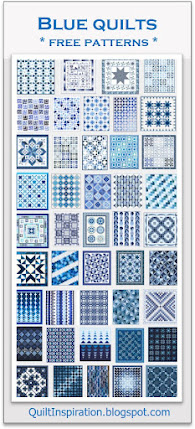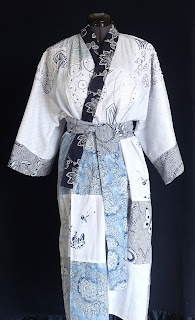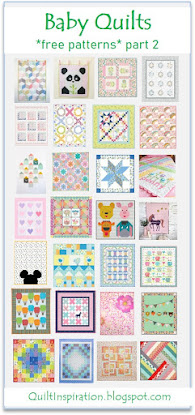Spring is in the air, 2006

Arnout is a Netherlander, and Spring is in the air was inspired by the spring green grass and colorful Dutch bulb fields of his homeland. The dreamlike imagery brings to mind the surrealistic style of René Magritte. The quilt was designed with The Persistence of Vision Raytracer (POV-Ray), a high-quality, totally free tool for creating stunning three-dimensional graphics. Among its other uses, POV-Ray was the first ray tracer software to render an image in orbit (from the International Space Station!) Arnout had the vision to apply this approach to the design of art quilts, and the results are indeed stunning.
Colorful Dreams, 2005

Colorful Dreams was inspired by a photo. In Colorful Dreams, relatively few fabrics have been used to create the image of the sleeping woman. Her face, eyes, hair and shoulders are apparent, and yet the effect is like that of an abstract painting. Both the design and the quilting pattern were created on the computer using QuiltAssistant, an ingenious software tool that allows the user to divide a photo into pieces of arbitrary size and shape, and convert the pieces into a quilt pattern (see the links at the bottom of the post).
Menger's Cube, 2004

Curiosity about the name of this quilt inspired us to look further. Here's what we learned: the object known as Menger's Sponge was first described by mathematician Karl Menger in 1926, while he was exploring the idea of topological dimension. Cosman's cube is similar to Menger's sponge (see the far right image, below). However, in the quilt, the big cube has been hollowed out, and the remaining corner block appears to be floating under the overhang of the larger structure. Cosman has even created shadows underneath, as if the sun is shining on the structure from above.
In a nutshell, construction of Menger's sponge starts with a Rubik's cube:

1. Begin with a cube (first image).
2. Divide every face of the cube into 9 squares, like a Rubik's Cube. This will sub-divide the cube into 27 smaller cubes. Then, remove the cube at the middle of every face, and remove the cube in the center, leaving 20 cubes. This is a Level 1 Menger sponge (second image).
3. Repeat steps 1-2 for each of the remaining smaller cubes. The second repetition will give you a Level 2 sponge (third image), the third repetition will give you a Level 3 sponge (fourth image), and so on. The ultimate Menger sponge is what you are left with after an infinite number of iterations.
Quilt images are courtesy of Arnout Cosman. Visit his site to view a gallery of his quilts, and to vote for your favorites. In addition, Arnout has made available a free, downloadable version of Quilt Assistant. To top it off, Arnout has compiled a directory of quilt shops in Europe, along with their GPS coordinates!
Menger's sponge diagram, see Wikipedia.











No comments:
Post a Comment
We love reading each and every comment... thanks for visiting our blog!